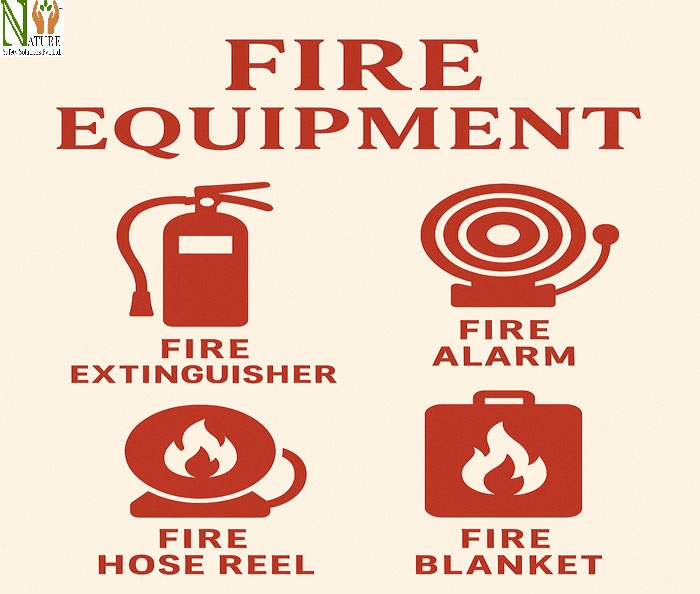Fire can start without warning and spread in seconds. In these moments, there is no time to think—only time to act. What gives people the chance to respond, escape, or control the situation is fire equipment.
These are the tools that silently wait until they’re needed the most. From alarms that warn of smoke to extinguishers that put out flames, fire equipment is the first and most powerful line of defense against a fast-moving danger. When properly installed and maintained, it can mean the difference between safety and disaster.

What Is Fire Equipment?
Fire equipment includes the tools and systems used to detect, stop, or slow down fires. These items are made for different places—homes, schools, factories, offices, and even vehicles. Some are designed for small fires. Others handle large, dangerous blazes.
Without this equipment, a small flame can grow into a disaster in minutes.
The Must-Have Fire Safety Tools
Fire Extinguishers
These are the most commonly used fire safety tools. You’ll find them almost everywhere—malls, offices, staircases, and kitchens. But not all extinguishers are the same. Each type is made for a specific kind of fire:
- Water extinguishers: Best for paper, wood, and cloth (Class A fires).
- Foam extinguishers: Used for flammable liquids like petrol or paint (Class B).
- CO₂ extinguishers: Designed for electrical equipment fires (Class C).
- Dry powder extinguishers: Versatile, used for gas, electrical, and liquid fires.
Fire Blankets
A fire blanket is a sheet made of fire-resistant material. It’s used to cover a small fire and cut off the oxygen feeding it. They are great in kitchens, where oil fires are common, or when someone’s clothes catch fire.
Smoke Detectors and Fire Alarms
Most fire deaths are caused by smoke inhalation, not burns. That’s why early warning is so important.
Smoke detectors sense smoke particles in the air and trigger a loud alarm. This gives you time to leave the area or take action. In homes, one should be placed in every sleeping area and hallway.
Fire Sprinkler Systems
Sprinklers are installed on ceilings in offices, malls, and large buildings. They are heat-activated—when the room gets too hot (about 68°C or 155°F), the sprinklers spray water directly onto the fire.
They’re very effective. In fact, in most buildings where sprinklers are installed, fires are controlled before the fire department even arrives.
Fire Hose Reels and Hydrants
For larger fires, especially in commercial buildings and factories, hose reels are vital. They deliver a strong and continuous flow of water over long distances.
Hydrants, found outdoors on streets or in buildings, are used by firefighters to access a reliable water source quickly. These tools are powerful and help in fighting intense fires.
Firefighter Gear and Protection
Firefighters work in extreme conditions and rely on specialized gear for their safety. This includes helmets, heat-resistant suits, gloves, boots, and breathing masks. This equipment allows them to enter burning buildings, search for people, and fight fire from the inside.
Without this protective gear, their work would be impossible and far more dangerous. While not used by the general public, firefighter equipment is a vital part of the larger fire safety system.
Maintenance and Readiness
Having fire equipment is not enough—it must always be ready to use. Extinguishers need to be checked for pressure and expiry. Smoke detectors should be tested regularly to ensure they work. Sprinklers and hydrants must be inspected and serviced by professionals.
Neglecting maintenance can cause equipment to fail during a real emergency, turning a preventable situation into a deadly one. Simple monthly checks and yearly servicing can keep everything working properly and ready when needed.
Also Read:
